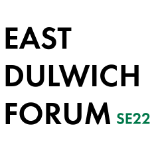LTN Discussion
-
-
Latest Discussions
-
I read elsewhere that somebody was stabbed, but I have no idea how reliable that information is.
-
Hello Did anyone see an accident about 15 minutes ago at the junction of Goodrich and Friern Road. A black car driven by a lady ran in to the side of my car as I was coming up Friern Road- instead of pulling over she drove off without providing her insurance information. If anyone happened to see this or has her license plate details please pm me. Thanks
-
By Fernando Pinto · Posted
Hi everyone, I have a few slots for next few days, if anyone need a tidy or one off, please feel free to call, text, or WhatsApp as well. Thanks very much Fernando Pinto -
By Dogkennelhillbilly · Posted
On what basis do you object to the economy spend numbers in the report and describe it as "extremely unlikely"? Is that objection based on data or is it vibes-based? Where does this estimate of "50-100 vehicles" come from? The objectors:supporters ratio doesn't speak volumes. Planning applications of this sort always receive objections from various curtain twitches and NIMBYs. It doesn't mean those objections are well-founded or sensible. The planning officers and councillors need to consider the issue objectively, not just count the letters. It's not a public vote. Saying the building is "out of character" is meaningless out of context. It's an unusual building on an unusual infill site. It's not supposed to be a model for future development across Dulwich as a whole. We are in the middle of a housing crisis. London desperately needs more housing units. This is an opportunity to get a whole bunch of them on a small, unloved industrial site on top of a transit hub. Not building it because people like the Dulwich Society complains it's "visible" is crazy.
-
East Dulwich Forum
Established in 2006, we are an online community discussion forum for people who live, work in and visit SE22.


Recommended Posts